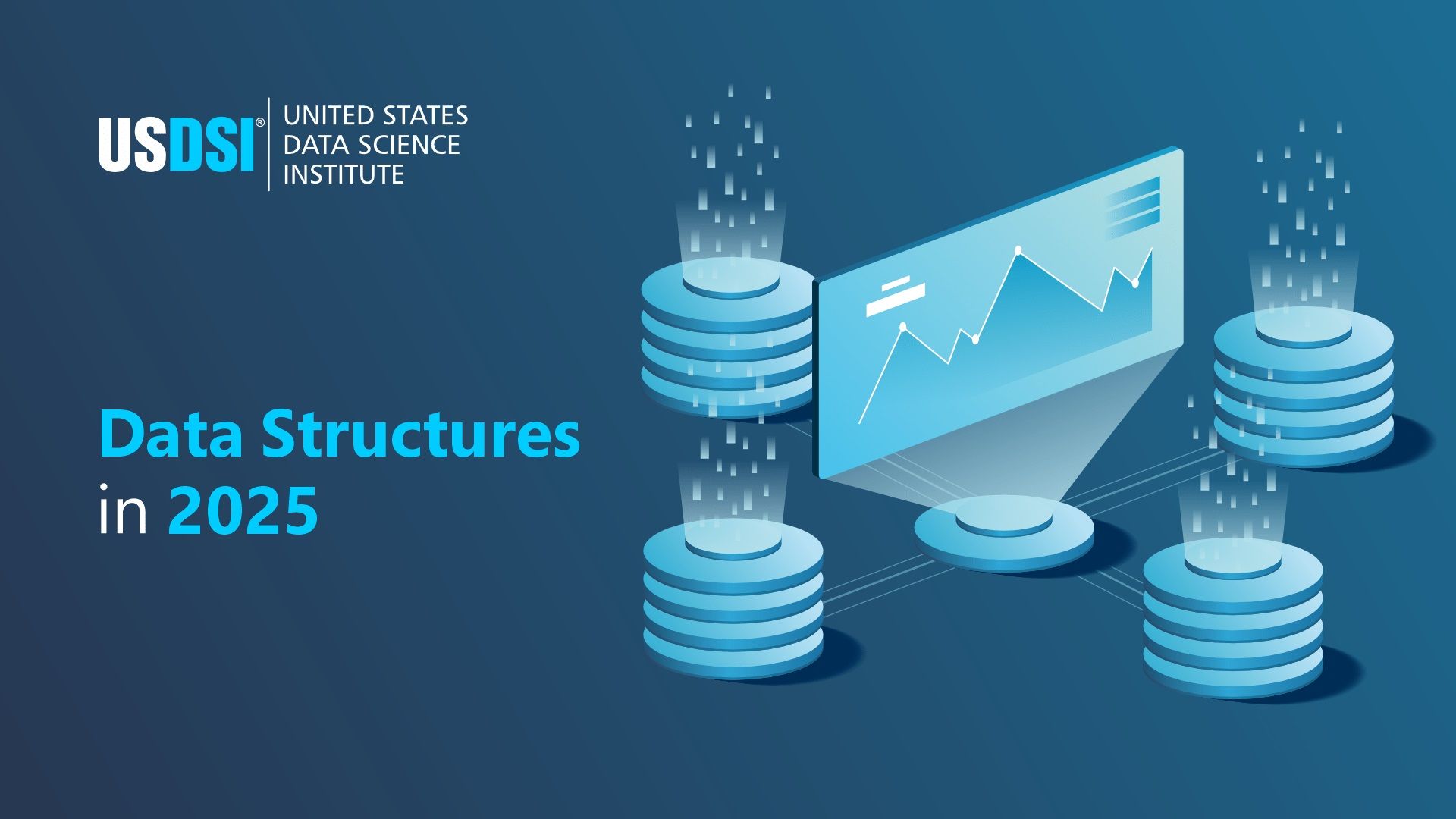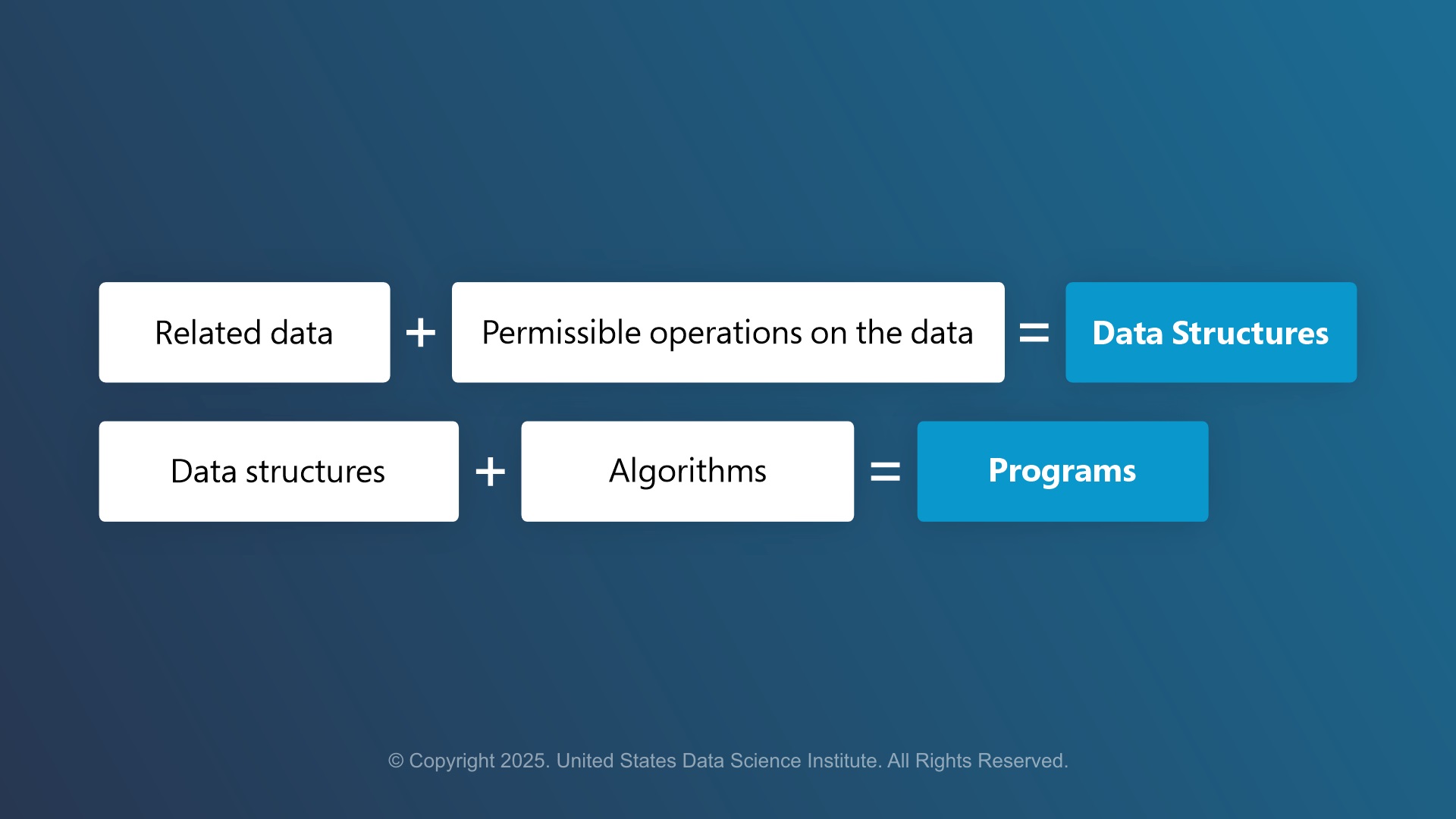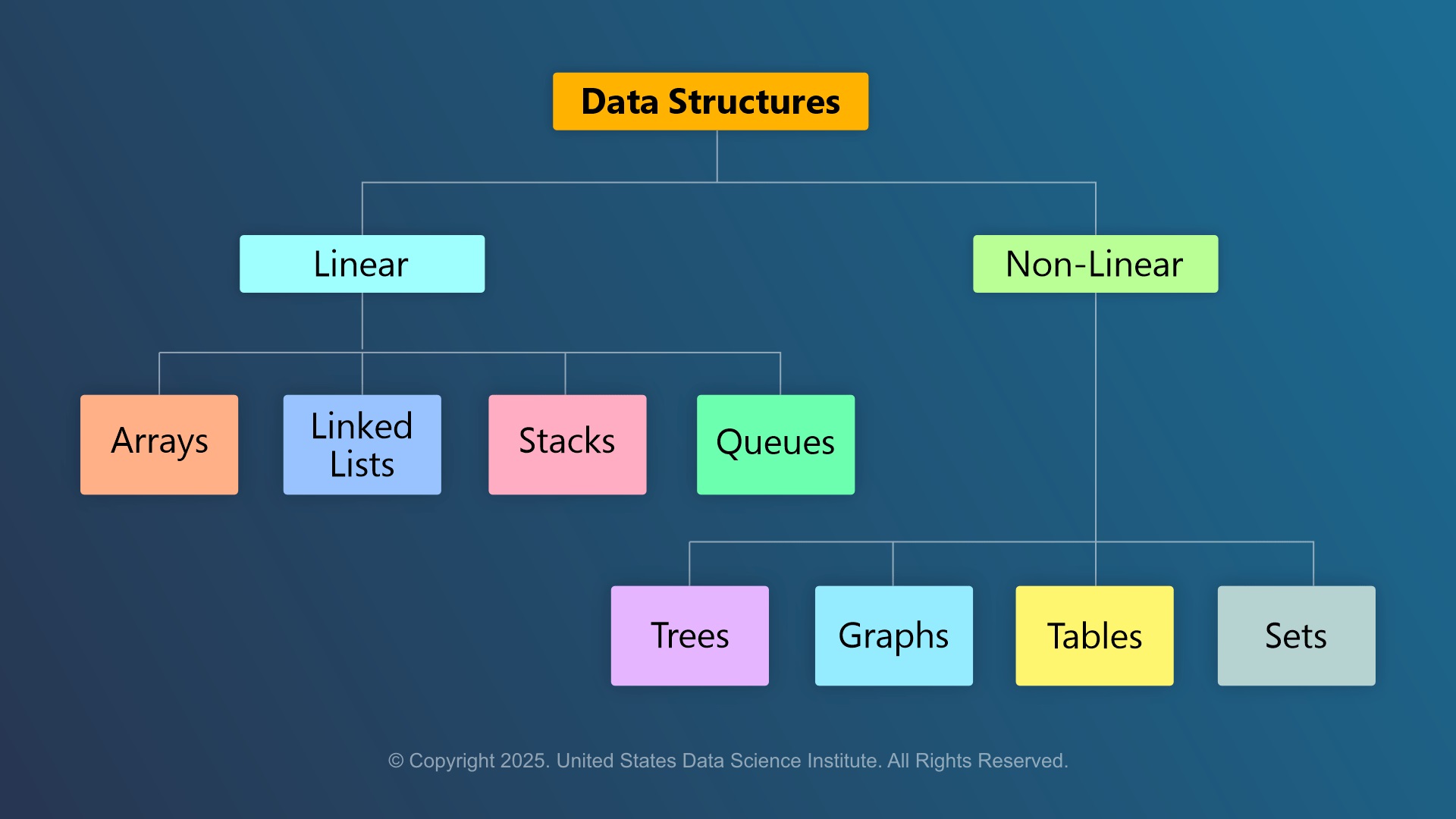
Data is the lifeblood of numerous systems and applications today. Whether it is social media interaction or production recommendation in your favorite shopping app, without efficient data storage and processing, they may not be as functional as they seem.
This is where data structures come into play. In this article, let’s understand in detail the definition, types, and applications of data structures and see how it is assisting data science in 2025.
Data is the lifeblood of numerous systems and applications today. Whether it is social media interaction or production recommendation in your favorite shopping app, without efficient data storage and processing, they may not be as functional as they seem.
This is where data structures come into play. In this article, let’s understand in detail the definition, types, and applications of data structures.
What is Data Structure?
Data in its raw form is a collection of texts and figures. But if it is not organized properly, then it becomes very difficult for data science professionals to access or process data to extract meaningful and actionable insights from them.
You can simply imagine a library where books are just piled up randomly and you want to borrow your favorite book. You can think of how difficult it will be – time-consuming, frustrating, and annoying.
Data structures help to solve this problem. They help with the organization of data and make it easier for everyone to access and manipulate data whenever required.
Data structures refer to the specialized format to organize, process, store, and retrieve data. Through data structures, you can define the relationships between data elements and operations to perform on them. Therefore, it becomes important to choose the right data structure and data structure technique because it will directly impact performance, memory usage, and efficiency of algorithms.
Why are Data Structures Important?
Integers or floating-point values are the base data types and are available in almost all computer programming languages. However, they are generally not enough to define the logical intent for processing and use of data.
Applications using data should know how they are organized so that they can simplify the processing. Data structures assist with this by bringing the data elements together in a logical way and making it easier to use and share data.
They basically provide a formal way to describe how data elements are organized.
Understand it this way, every software or application consists of two primary things i.e., algorithms and data.
While data refers to the information component, algorithms can be considered as the set of rules and instructions that convert data into meaningful elements used in programming.
Therefore,

Types of Data Structures
Data structures can be broadly classified into two categories: Linear and Non-linear.
Linear Data Structures: In this, elements are arranged sequentially.
It refers to the collection of elements of the same data types stored in continuous memory locations. Therefore, they can be accessed faster using their index.
However, their fixed size poses a significant challenge as it makes insertion or deletion of elements difficult and may require shifting them. So, they are most suitable for storing lists of items or implementing other data structures.
These consist of nodes in which each node contains data and a pointer or reference for the next node in the sequence.
Since they are dynamic in size, they help elements to be easily inserted or deleted in the sequence. This introduces a challenge though, as accessing a specific element will require going through the list from the beginning thus making the process slower.
They are based on the Last-In, First-Out (LIFO) principle i.e., elements are added or removed from the top.
They follow the First-In, First-Out (FIFO) principle meaning elements are added at the rear and removed from the front.
Non-Linear Data Structures: In this, elements are not arranged sequentially.
They represent hierarchical relationships between data elements. They have nodes connected to each other by edges. Root (topmost node), parent (node with children), child (node with parent), leaf (node with no children), etc. are some of the key terms used in this data structure.
Common types include: Binary trees, binary search trees (BSTs), AVL trees, and B-trees.
It consists of nodes connected by edges and they can be directed i.e., edges a direction, undirected with edges having no direction, or weighted with edges having associated values.
They are often used to represent social networks, mapping, network routing, etc.
Hash tables use a hash function to map important indices in an array. This helps to provide faster average-case search, insertion, and deletion.

Applications of Data Structures
Data structures are the core elements for various applications across industries. Some important applications include:
So, by now you must have understood how important data structure is for the organization and management of data and how they are used across industries for a variety of applications. By clearly understanding the types of data structures, their characteristics, and other intricate concepts, you can easily develop your desired software systems.
You should also learn how to choose the right data structure for any particular problem so that you can properly optimize its performance and appropriately utilize the available resources.
Master the essential concepts of data structure and learn how to use it to boost your data science career with the best data science certifications from USDSI®.
This website uses cookies to enhance website functionalities and improve your online experience. By clicking Accept or continue browsing this website, you agree to our use of cookies as outlined in our privacy policy.